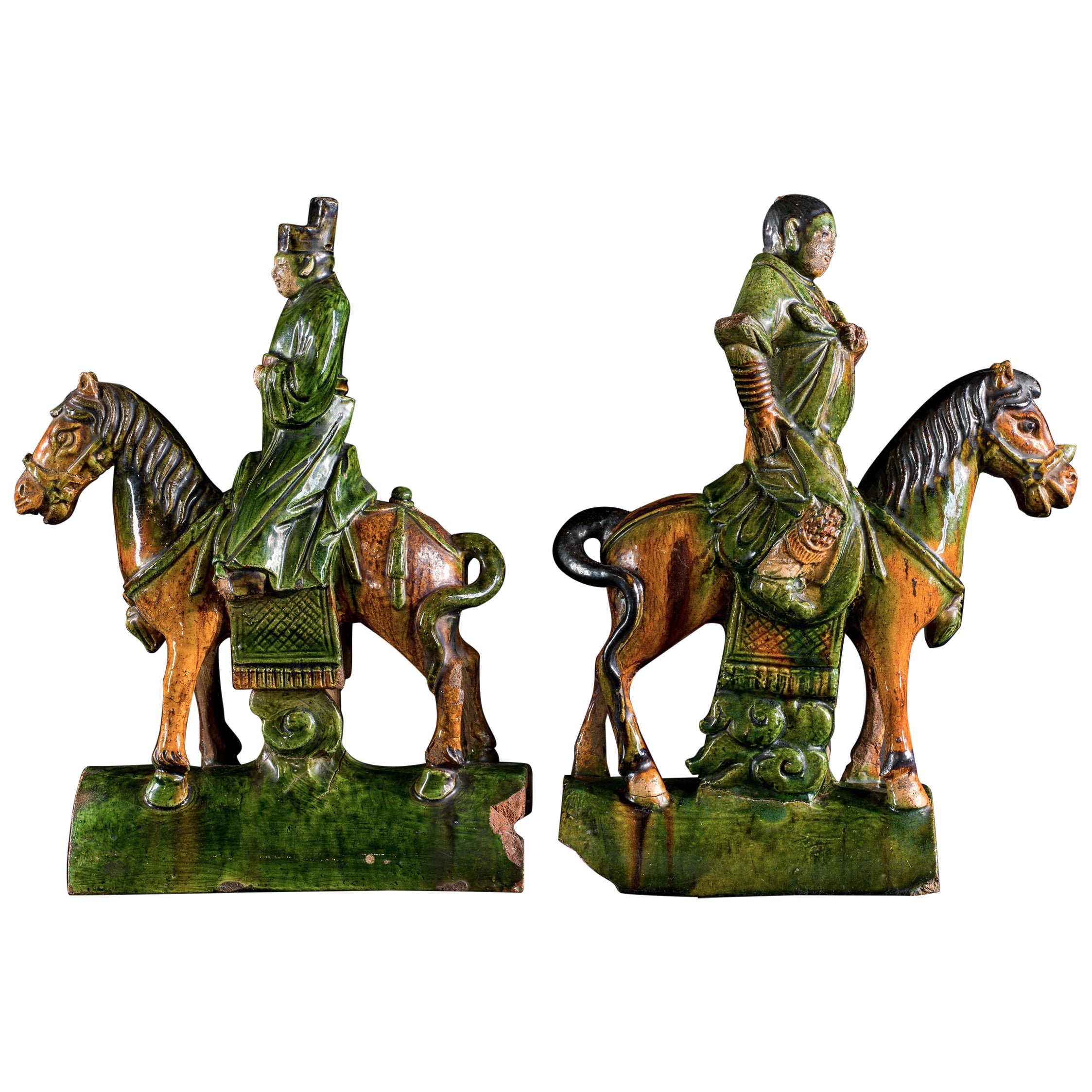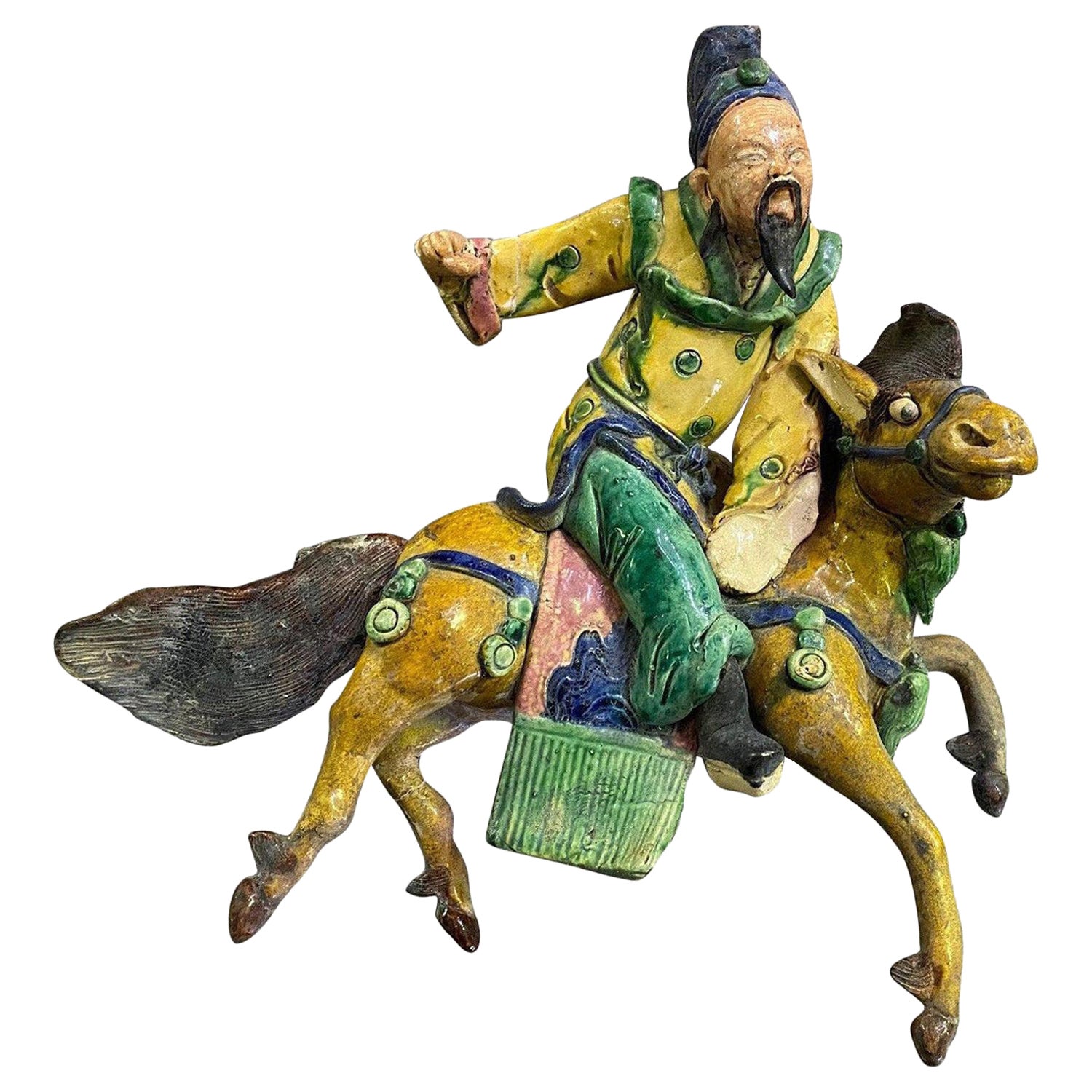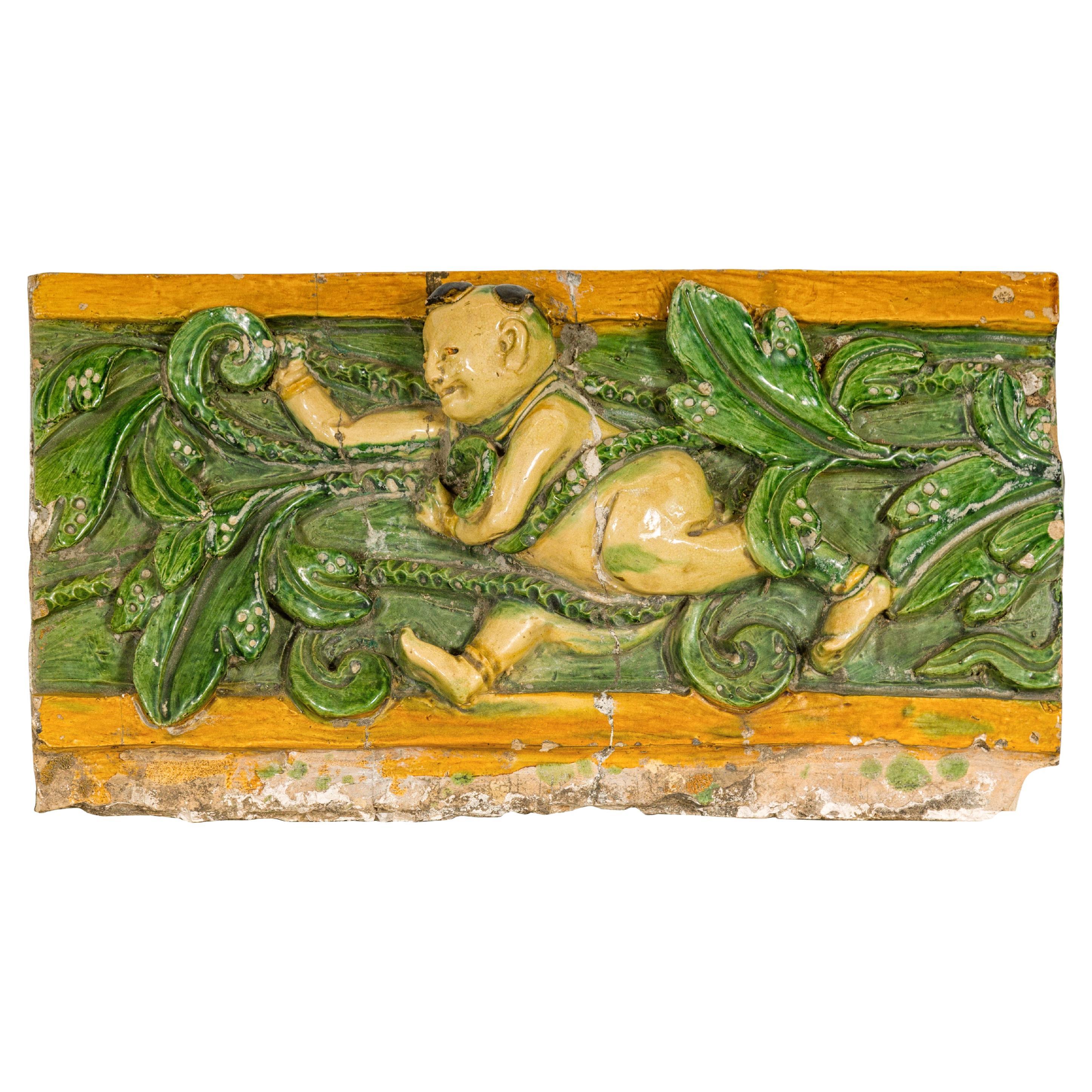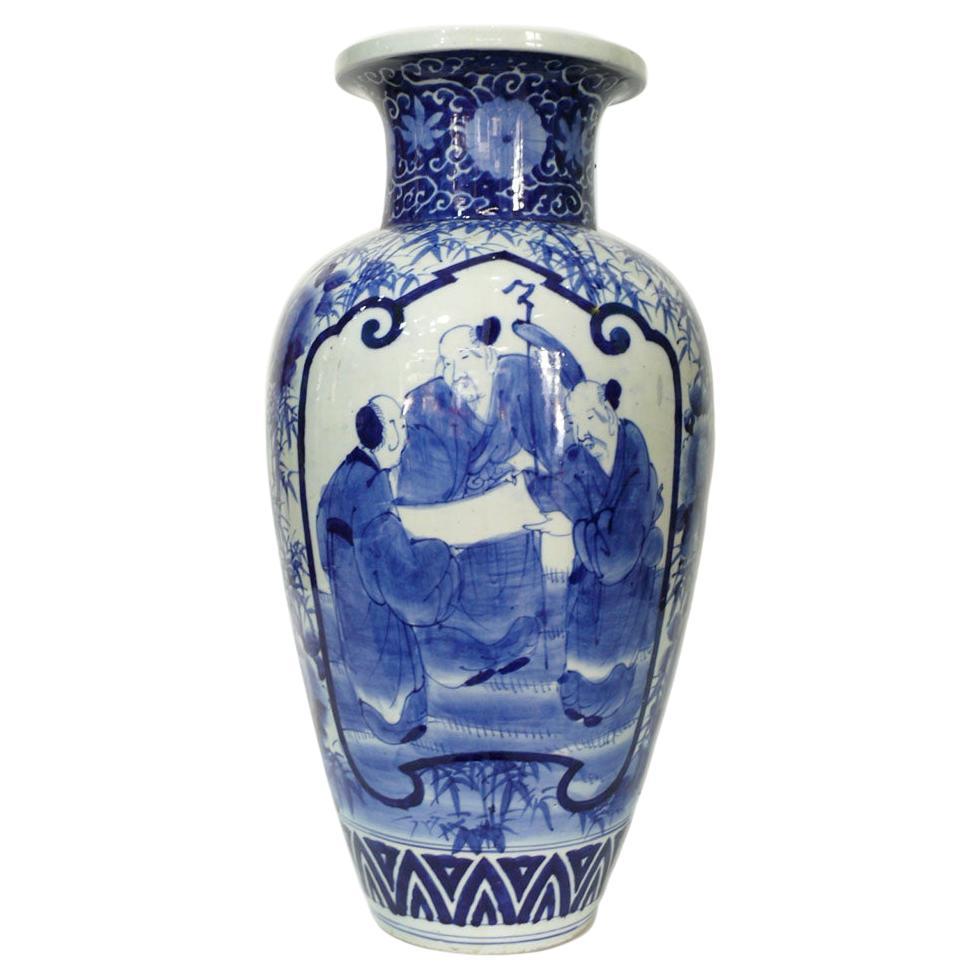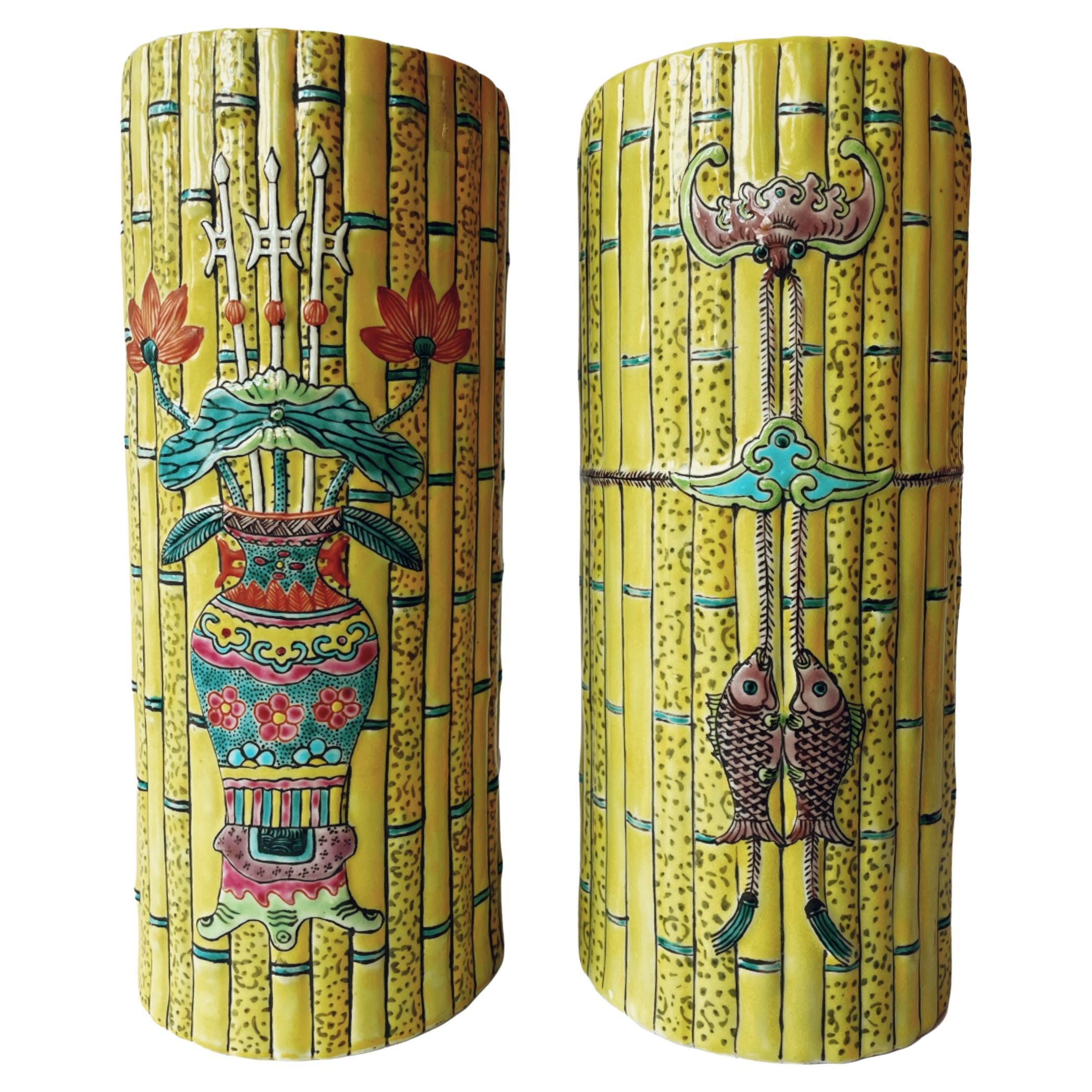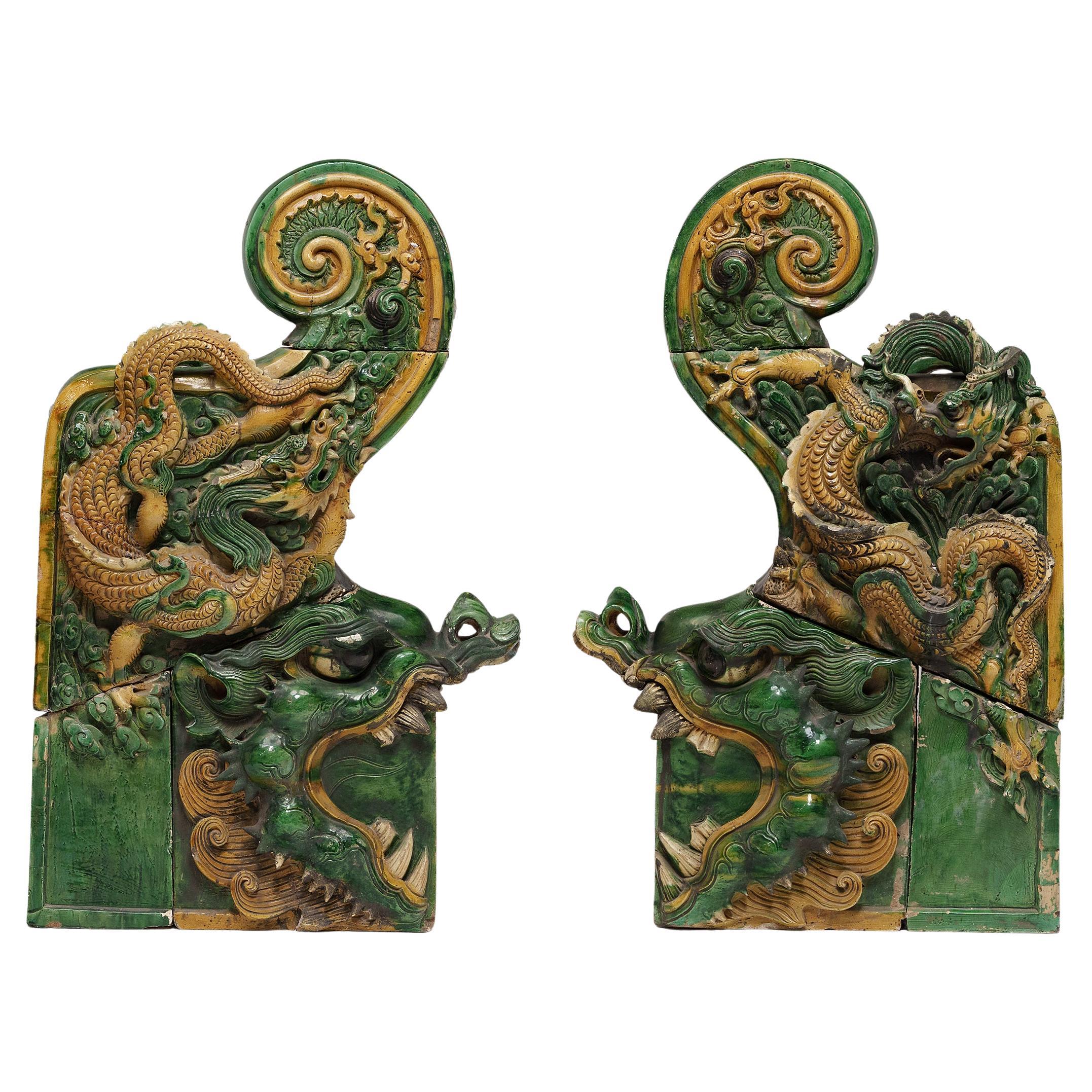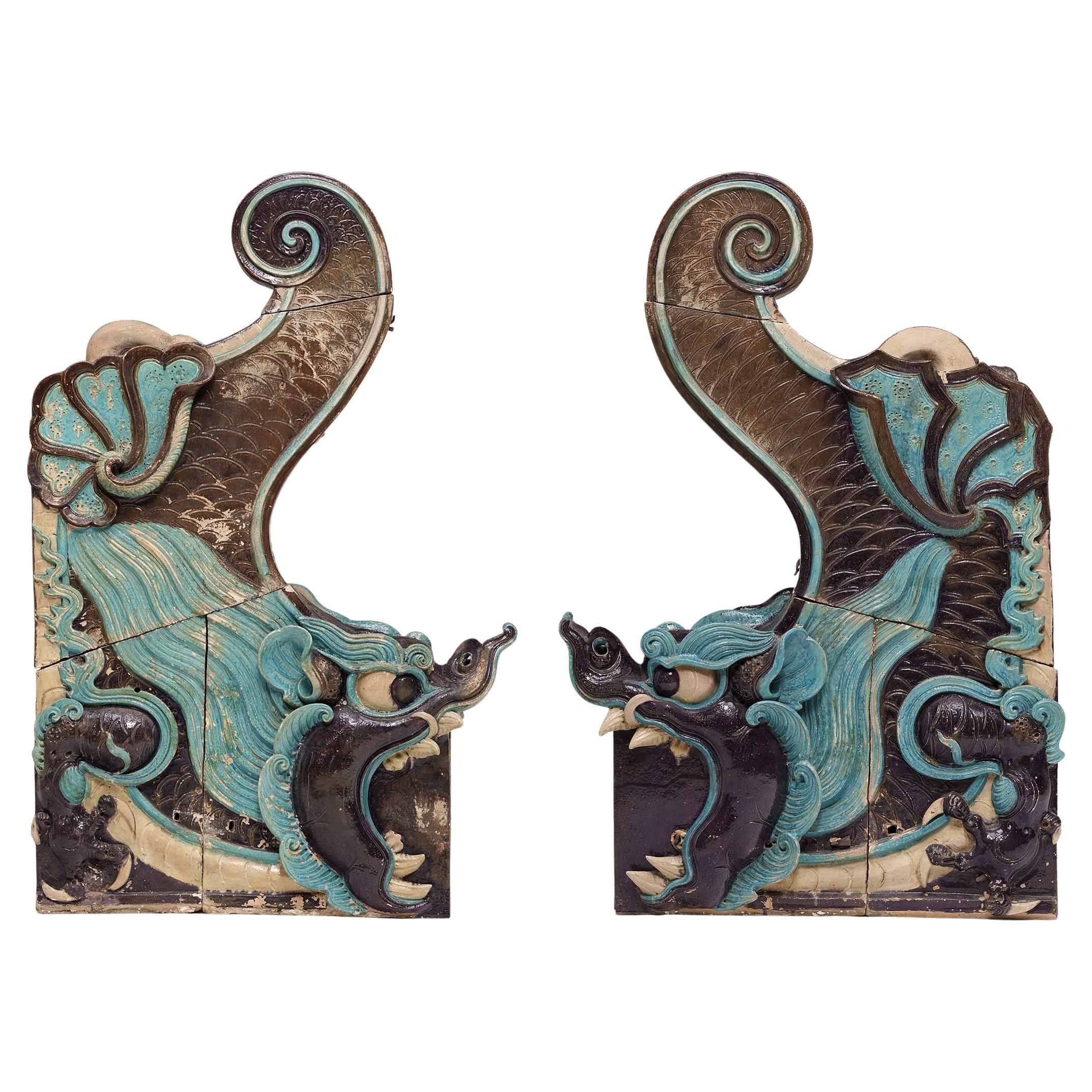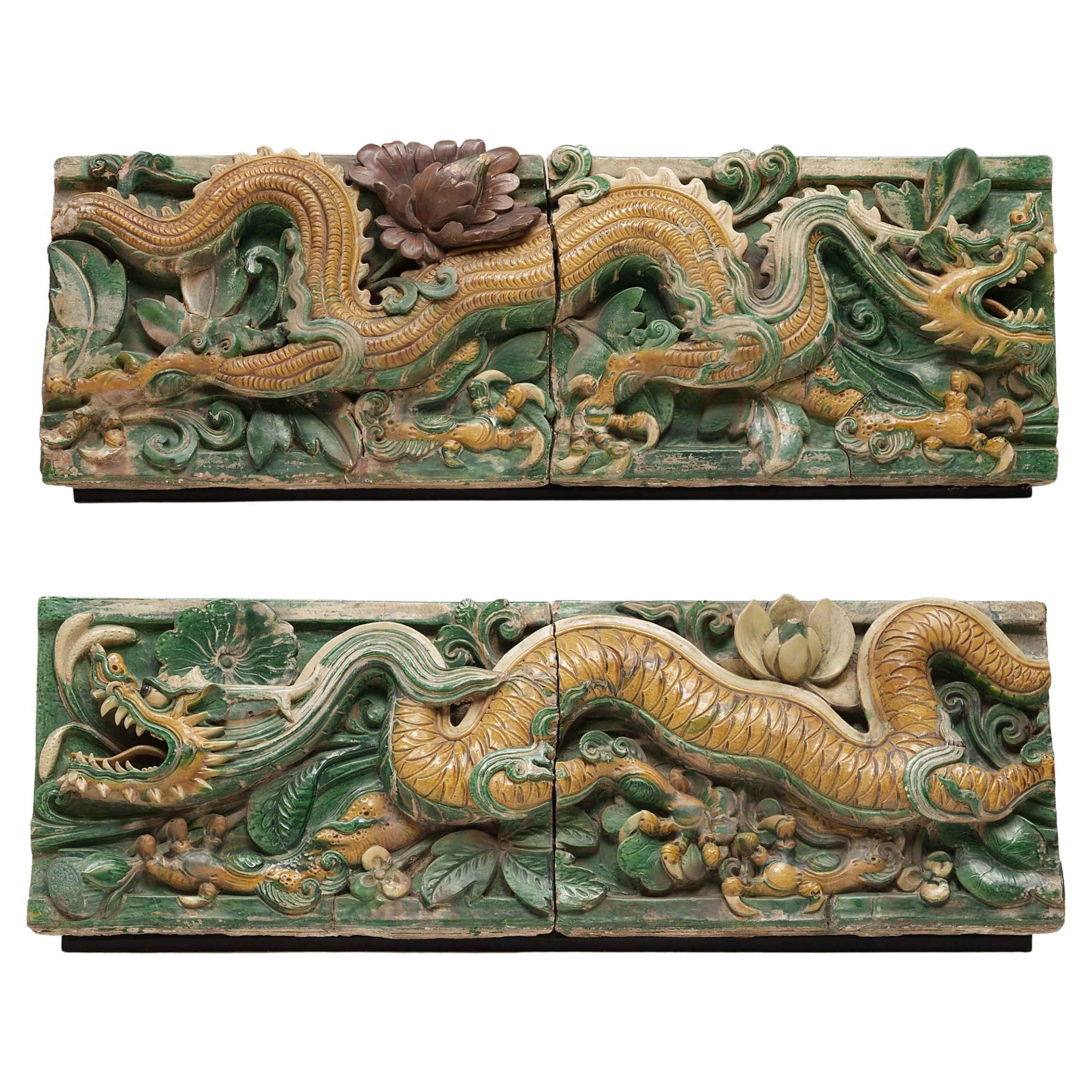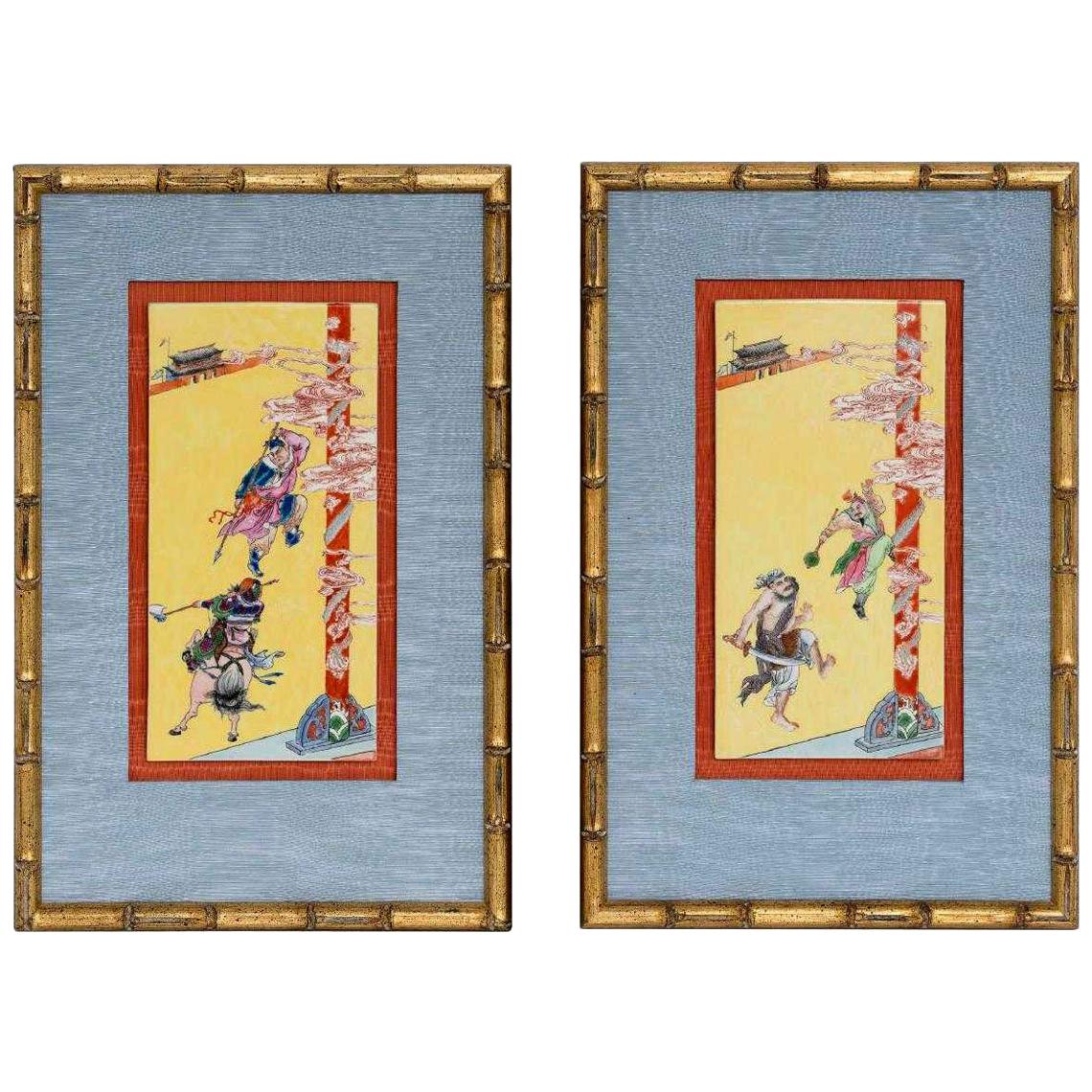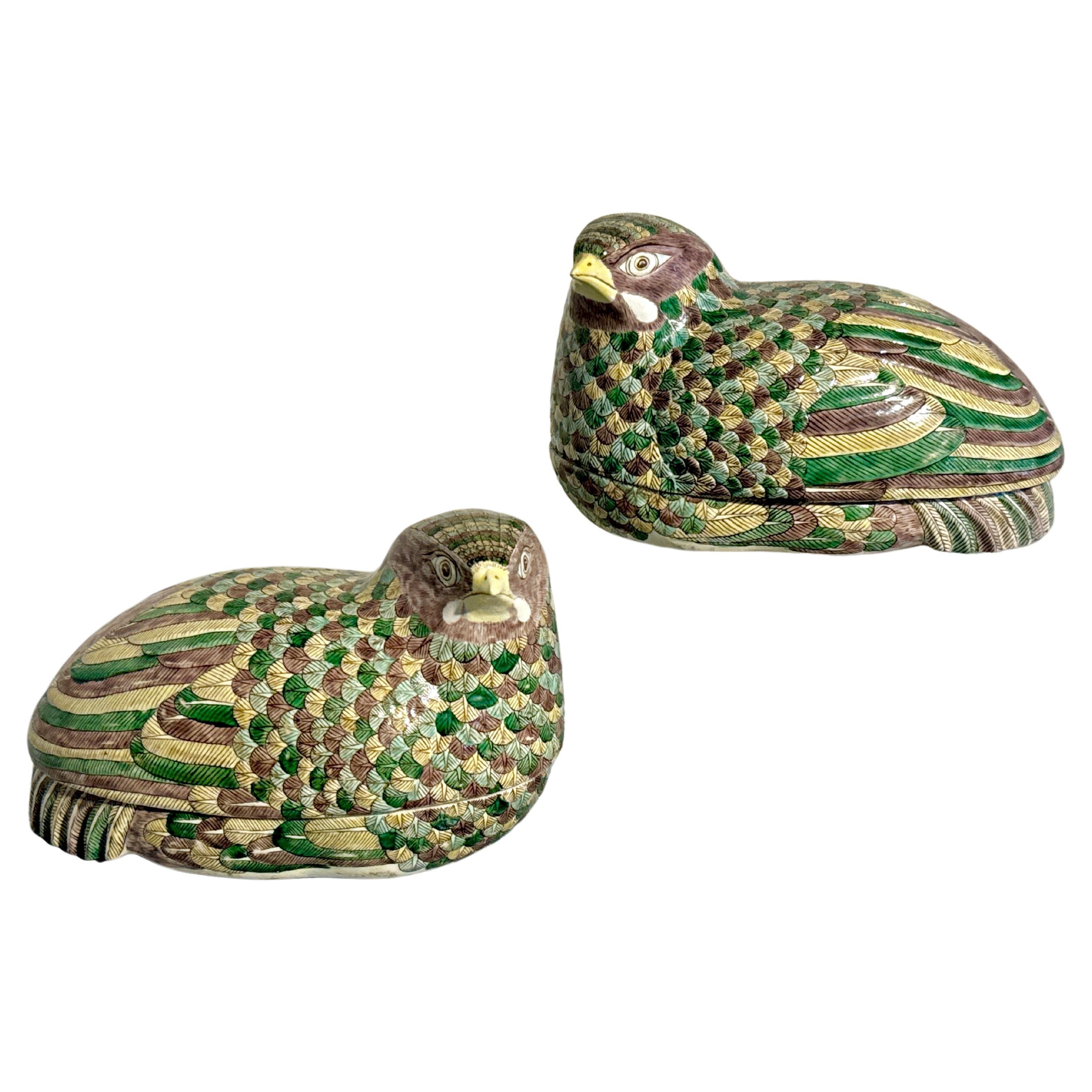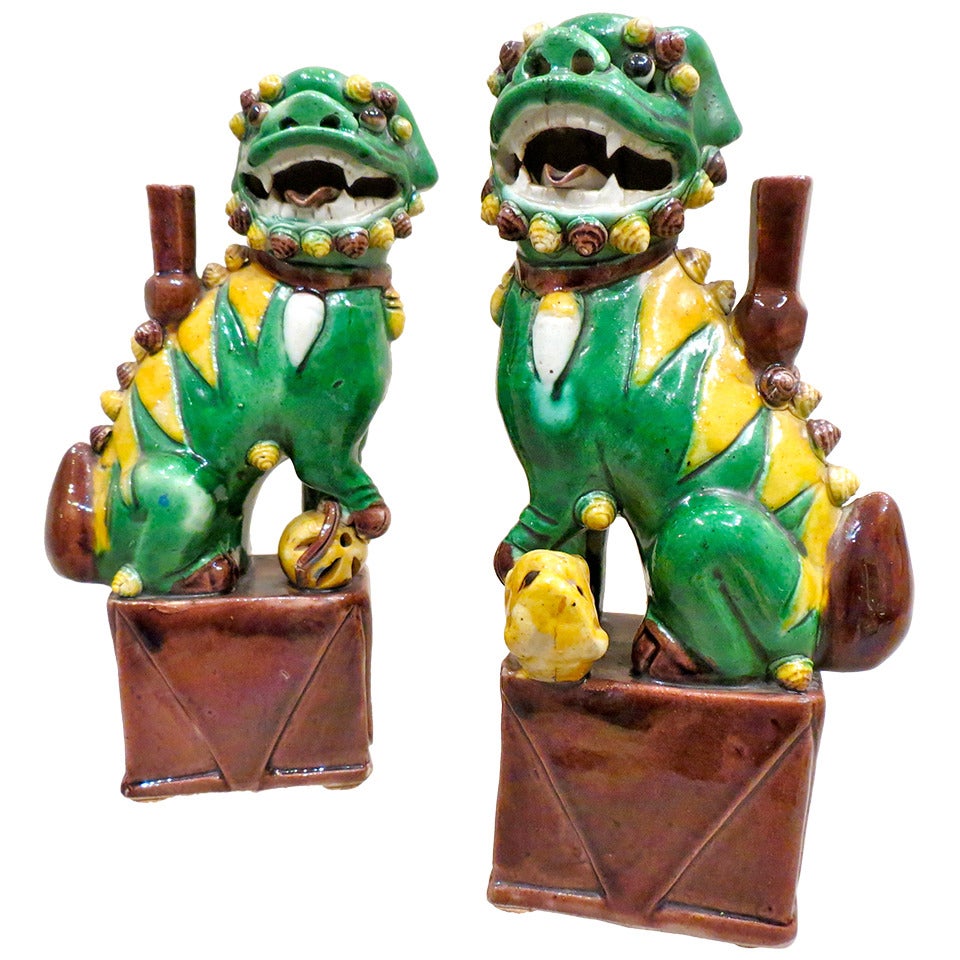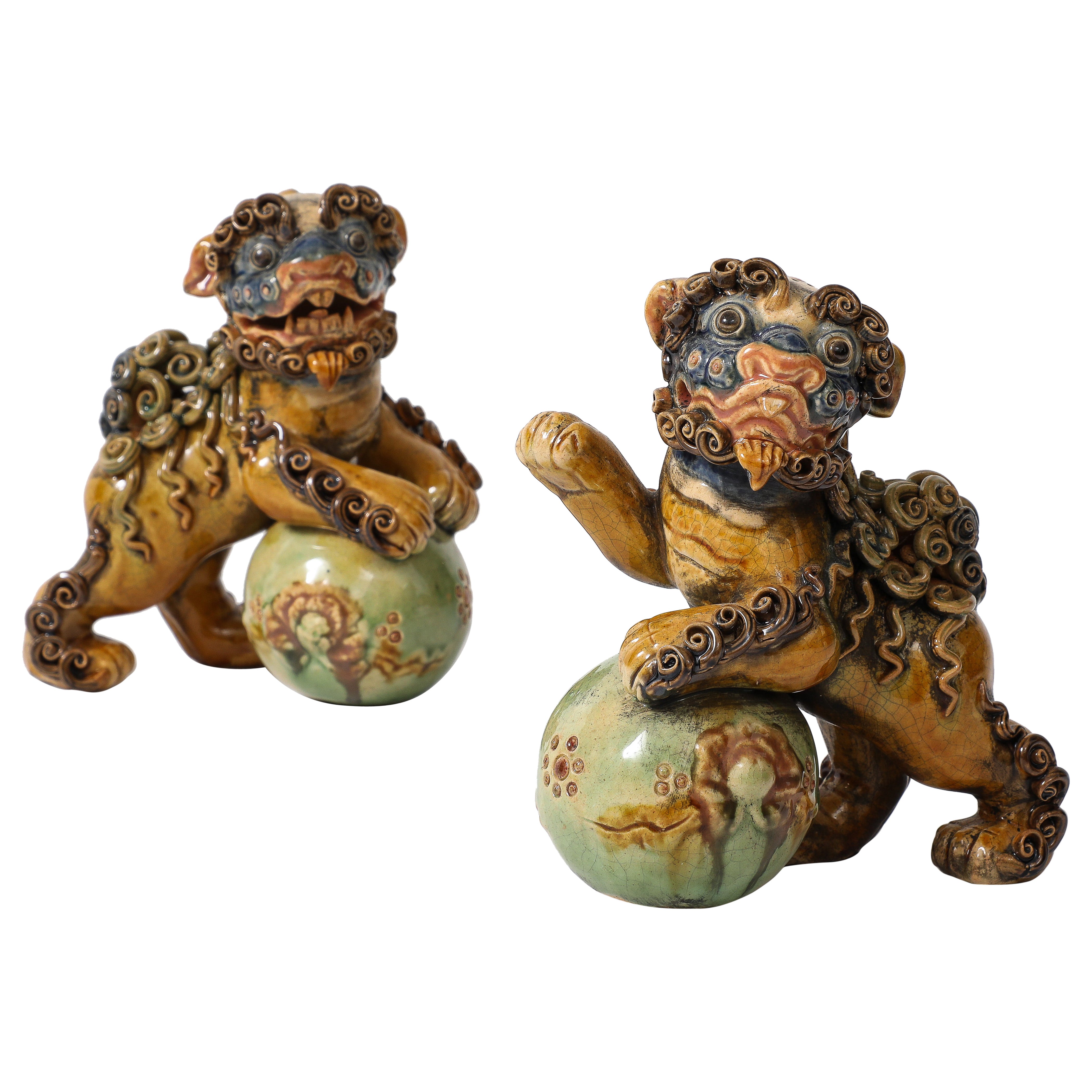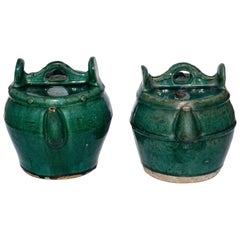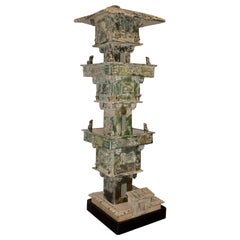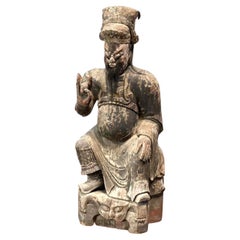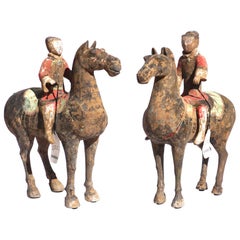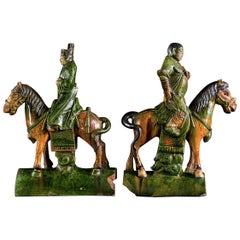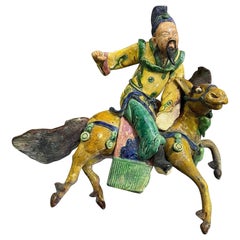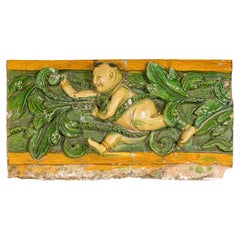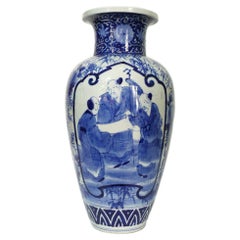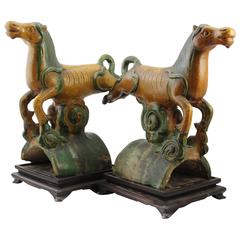
Qing Dynasty Pair of Emperor Horse Roof Tiles
View Similar Items
Want more images or videos?
Request additional images or videos from the seller
1 of 6
Qing Dynasty Pair of Emperor Horse Roof Tiles
$1,800List Price
About the Item
- Dimensions:Height: 11 in (27.94 cm)Width: 13 in (33.02 cm)Depth: 6 in (15.24 cm)
- Sold As:Set of 2
- Style:Chinese Export (Of the Period)
- Materials and Techniques:Terracotta,Glazed
- Place of Origin:
- Period:
- Date of Manufacture:circa 1850
- Condition:Wear consistent with age and use. A rear hoof missing and a repaired crack on tile. Wear indicative of age.
- Seller Location:Dallas, TX
- Reference Number:1stDibs: LU177425898863
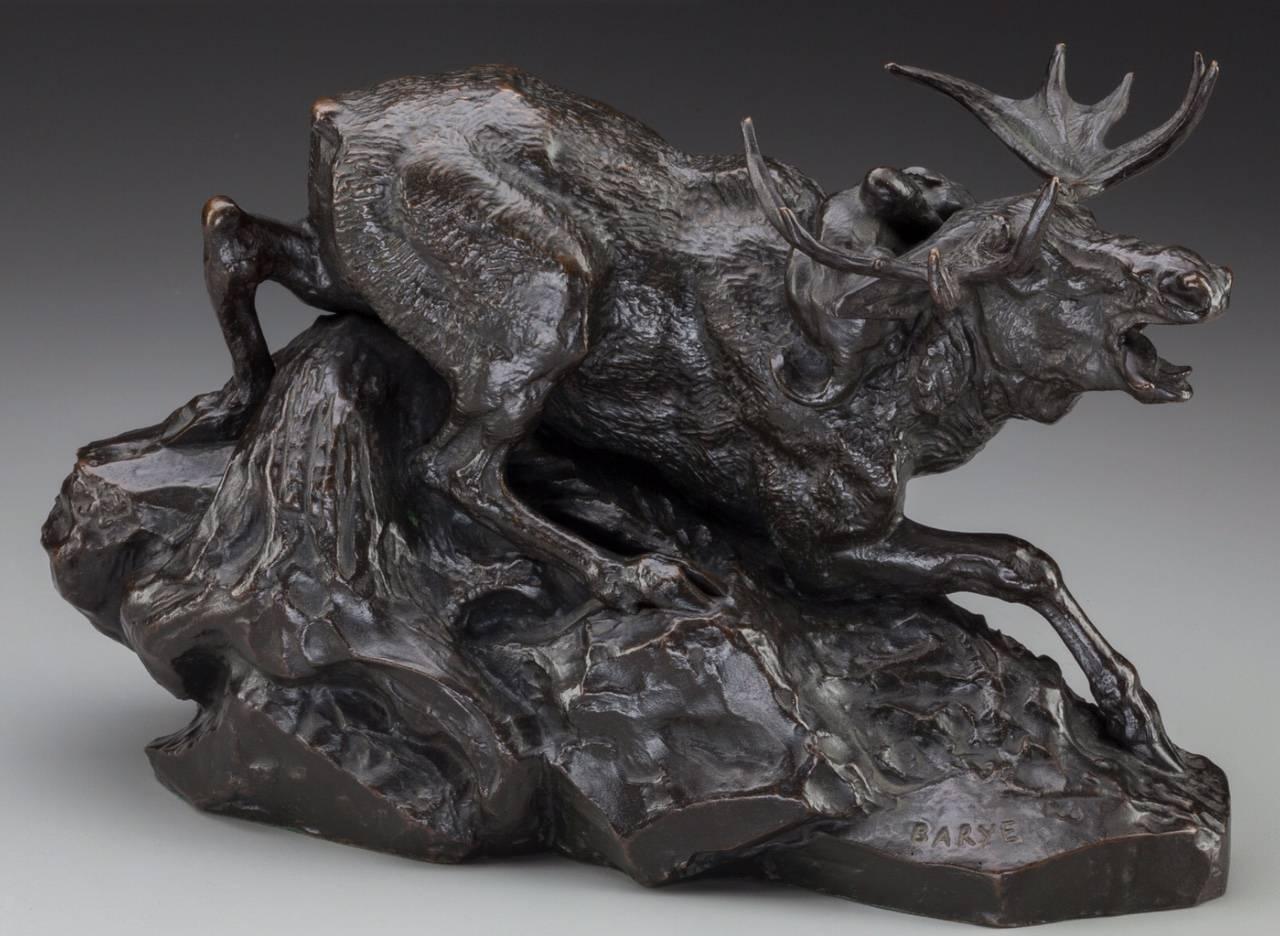
About the Seller
4.9
Gold Seller
Premium sellers maintaining a 4.3+ rating and 24-hour response times
Established in 2000
1stDibs seller since 2015
444 sales on 1stDibs
Typical response time: 12 hours
Authenticity Guarantee
In the unlikely event there’s an issue with an item’s authenticity, contact us within 1 year for a full refund. DetailsMoney-Back Guarantee
If your item is not as described, is damaged in transit, or does not arrive, contact us within 7 days for a full refund. Details24-Hour Cancellation
You have a 24-hour grace period in which to reconsider your purchase, with no questions asked.Vetted Professional Sellers
Our world-class sellers must adhere to strict standards for service and quality, maintaining the integrity of our listings.Price-Match Guarantee
If you find that a seller listed the same item for a lower price elsewhere, we’ll match it.Trusted Global Delivery
Our best-in-class carrier network provides specialized shipping options worldwide, including custom delivery.More From This Seller
View AllGreen Glazed Shiwan Pottery Teapots Qing Dynasty, 'Pair'
Located in Dallas, TX
A near pair of 19th century Sancai green glazed pottery teapots. Both with yoked handles, spouts and lids. Both also have the Republic era official government wax red seal signifying...
Category
Antique 1880s Chinese Chinese Export Pottery
Materials
Pottery
Han Dynasty Green Glazed Archers Watch Tower Oxford TL Tested
Located in Dallas, TX
Monumental Pottery Watch Tower in Green Glaze; Han Dynasty (2016 BC -AD 220)
Earthenware three-storied pavilion from the Eastern Han Dynasty. Each of the...
Category
Antique 15th Century and Earlier Chinese Han Ceramics
Materials
Terracotta
Chinese Qing Dynasty Wood Sculpture
Located in Dallas, TX
18th/19th Century Chinese Wood Sculpture Of A Emperor or General. Retains Some Polychrome Decoration And Horsehair Beard, Male Figure Seated On ...
Category
Antique Late 18th Century Chinese Qing Figurative Sculptures
Materials
Wood
Pair of Han Dynasty Pottery Horses and Equestrian Riders
Located in Dallas, TX
A wonderful pair of Ex Sotheby’s painted Polychrome Equestrian Horse and Riders made from gray pottery, Presents beautifully and guaranteed authentic with provenance and COA.
Measures: Height 11.5 inches and width 11 inches
Condition: Possible professional restorations but not detectable.
Provenance: Sotheby’s London. 16th November, 1999. Lot 12 (2 of 4 horses in that lot).
Sotheby’s New York, NY September 14, 2019.
The importance of the horse in the history and culture of China can be viewed, in part, through the artistic legacy of this great civilization. In sculpture, painting, and literature, horses were glorified and revered. Horses were believed to be related to mythological dragons, reflecting their sacred status within society. During the unification of China under the Han Dynasty, bands of mounted nomadic warriors from the north threatened the country. In order to thwart their attacks, the Chinese sought to import stronger, faster steeds from Central Asia (as opposed to the Mongol ponies used by the invaders), eventually leading to the creation of the Silk Road. This small sculpture of a mounted soldier reveals the crucial military role of the horse. When compared to the diminutive stature of the rider, the importance of the horse becomes readily apparent. This creature provided security and strength, allowing the Empire to secure its borders and expand its influences across Central Asia. The magnificent regalia of the horse, including a brilliantly painted saddle in red and green/gold, reflect the respect this animal received. The warrior as well is gorgeously decorated with a painted red tunic and gray chest...
Category
Antique 15th Century and Earlier Chinese Chinoiserie Animal Sculptures
Materials
Pottery
Pair of Han Dynasty pottery Horses and Equestrian Riders
Located in Dallas, TX
A wonderful pair of Ex Sotheby’s painted Polychrome equestrian horse and riders made from gray pottery, presents beautifully and guaranteed authentic with provenance and COA.
Measures: Height 11.5 inches and width 11 inches
Condition: Possible professional restorations but not detectable.
Provenance: Sotheby’s London. 16th November, 1999. Lot 12 (2 of 4 horsed in that lot)
Sotheby’s New York, NY September 14, 2019.
AVANTIQUES is dedicated to providing an exclusive curated collection of Fine Arts, Paintings, Bronzes, Asian treasures, Art Glass and Antiques. Our inventory represents time-tested investment quality items with everlasting decorative beauty. We look forward to your business and appreciate any reasonable offers. All of our curated items are vetted and guaranteed authentic and as described. Avantiques only deals in original antiques and never reproductions. We stand behind our treasures with a full money back return if the items are not as described.
The importance of the horse in the history and culture of China can be viewed, in part, through the artistic legacy of this great civilization. In sculpture, painting, and literature, horses were glorified and revered. Horses were believed to be related to mythological dragons, reflecting their sacred status within society. During the unification of China under the Han Dynasty, bands of mounted nomadic warriors from the north threatened the country. In order to thwart their attacks, the Chinese sought to import stronger, faster steeds from Central Asia (as opposed to the Mongol ponies used by the invaders), eventually leading to the creation of the Silk Road. This small sculpture of a mounted soldier reveals the crucial military role of the horse. When compared to the diminutive stature of the rider, the importance of the horse becomes readily apparent. This creature provided security and strength, allowing the empire to secure its borders and expand its influences across Central Asia. The magnificent regalia of the horse, including a brilliantly painted saddle in red and green/gold, reflect the respect this animal received. The warrior as well is gorgeously decorated with a painted red tunic and gray chest...
Category
Antique 15th Century and Earlier Chinese Han Animal Sculptures
Materials
Pottery
Han Dynasty Polychromed Horse and Rider
Located in Dallas, TX
A fine Han dynasty polychrome painted terracotta horse and rider. The warrior is dressed in orange and black on a black horse.
Measures: Height 14 inches (35 cm)
Width 12.5 inches (32 cm).
Condition: Excellent with tastefully undetectable repairs.
During the unification of China under the Han dynasty, bands of mounted nomadic warriors from the north threatened the country. In order to thwart their attacks, the Chinese sought to import stronger, faster steeds from Central Asia (as opposed to the Mongol ponies used by the invaders), eventually leading to the creation of the Silk Road. This small sculpture of a mounted soldier reveals the crucial military role of the horse. When compared to the diminutive stature of the rider, the importance of the horse becomes readily apparent. This creature provided security and strength, allowing the empire to secure its borders and expand its influences across Central Asia. The magnificent regalia of the horse, including a brilliantly painted saddle in red and green/gold, reflect the respect this animal received. The warrior as well is gorgeously decorated with a painted red tunic and gray chest...
Category
Antique 15th Century and Earlier Chinese Han Figurative Sculptures
Materials
Terracotta
You May Also Like
Pair of Ming Dynasty Horsemen Roof Tiles
Located in London, GB
A pair of Chinese Ming Dynasty (1368-1644) sancai-glazed ridge tiles modelled as horse and rider. Both tiles are glazed in rich green and amber, the horses ...
Category
Antique 16th Century Chinese Ming Ceramics
Materials
Pottery
Chinese Glazed Ceramic Pottery Guardian Ancestor Roof Tile Qing Figure on Horse
Located in Studio City, CA
A fantastic piece. Wonderfully glazed and colored work of a seated man with brightly colored robes riding a mythical galloping horse.
We believe this is Qing Dynasty (1644-1912) ...
Category
Early 20th Century Chinese Qing Ceramics
Materials
Ceramic, Pottery
Qing Dynasty Tricolor Roof Fragment Depicting a Boy Amidst Leaves
Located in Yonkers, NY
A Qing Dynasty period tricolor glazed terracotta roof fragment from the 19th century depicting a running boy in raised relief amidst leaves. This Qing Dynasty period terracotta roof fragment, dating back to the 19th century, showcases a vibrant tricolor glaze that breathes life into the depicted scene of a running boy amidst foliage in raised relief. Its historical value and artistic merit are evident through the skillful execution and vivid colors, which have been preserved remarkably over centuries. This piece, along with several others available, serves as a testament to the rich cultural heritage and intricate craftsmanship of the period. It can effortlessly transform any living space by introducing an element of classical Chinese artistry. Imagine this exquisite fragment mounted on a stand or displayed prominently on a wall, where it not only becomes a focal point but also sparks conversations about its origin and the symbolism behind the depicted motifs. Perfect for collectors or enthusiasts of Asian antiques, this piece bridges the gap between traditional decor and contemporary spaces, adding a touch of antiquity and sophistication. Its presence in a home office, library, or living room not only embellishes the space but also pays homage to the timeless elegance of Qing Dynasty art.
Category
Antique 19th Century Chinese Qing Ceramics
Materials
Terracotta
Chinese Qing Dynasty Vase
Located in Buenos Aires, Argentina
Chinese Qing Dynasty Vase
Circa 1900 Origin China
Decoration with traditional scenes
(1644 - 1911)
Glazed and enamelled technique
Blue and white colour
Po...
Category
Antique Early 1900s Chinese Chinese Export Ceramics
Materials
Enamel
Pair of 19th Century Qing Dynasty Faux Bamboo Chinese Vases
Located in Ixelles, BE
Faux bamboo Chinese vases were a type of decorative art that emerged during the Qing Dynasty (1644-1912) in China. These porcelain vases were designed to mimic the appearance of bamboo, a plant highly regarded in Chinese culture for its resilience, elegance, and symbolism. Bamboo is associated with attributes such as flexibility, strength, and modesty, making it a popular motif in Chinese art.
In the Qing Dynasty the color yellow held significant symbolism and represented imperial authority, power, and the emperor himself. Yellow was considered the most sacred and prestigious color in Chinese culture, and it had strong associations with the emperor's position as the Son of Heaven and the ruler of all under heaven.
The marks at the bottom of the vases indicate that these were crafted more specifically during the Tongzhi period – an emperor who reigned from 1861 to 1875, which effectively lasted nthrough his adolescence and was largly overshadowed by the rule of his mother, Empress Dowager Cixi. Although he had little influence over state affairs, the events of his reign gave rise to what historians call the “Tongzhi Restoration”, an unsuccessful modernization program.
The polychrome enamels representing on one vase a traditional Chinese kite...
Category
Antique Late 19th Century Chinese Chinese Export Ceramics
Materials
Porcelain
$2,682 Sale Price / set
20% Off
Pair of Chinese Ming Sancai Chiwen Roof Tiles, c. 1650
Located in Chicago, IL
These monumental Chinese roof tiles were once installed as part of the elaborate roof of a Ming-dynasty temple or grand courtyard home. Dated to the 17th century or earlier, the scul...
Category
Antique 17th Century Chinese Ming Ceramics
Materials
Earthenware
Recently Viewed
View AllMore Ways To Browse
Horse Tile
Antique Terracotta Horse
Chinese Horse Terracotta
Chinese Green Tiles
Chinese Roof Tiles
Wucai Porcelain
Black Terracotta Tile
Antique Chinese Roof Tile
Antique Terracotta Roof Tiles
Terracotta Roof Tiles
Chinese Horse Tile
Canton Enamel
Asian Jug
Large Antique Asian Bowl
18th Century Chinese Furniture Bamboo
Large Porcelain Asian Bowl
Japanese Deer
Qing Teapot
